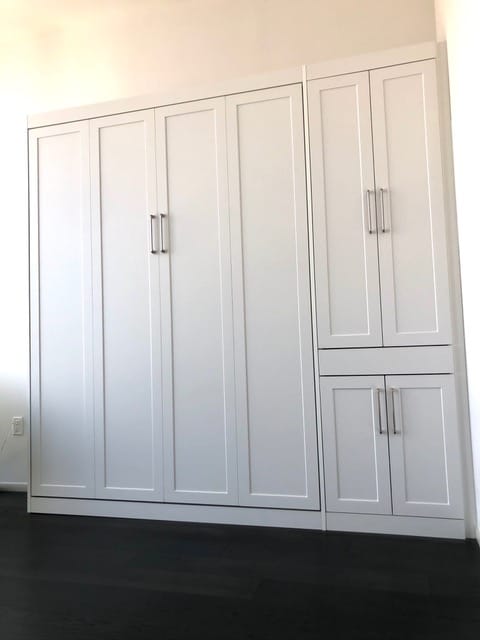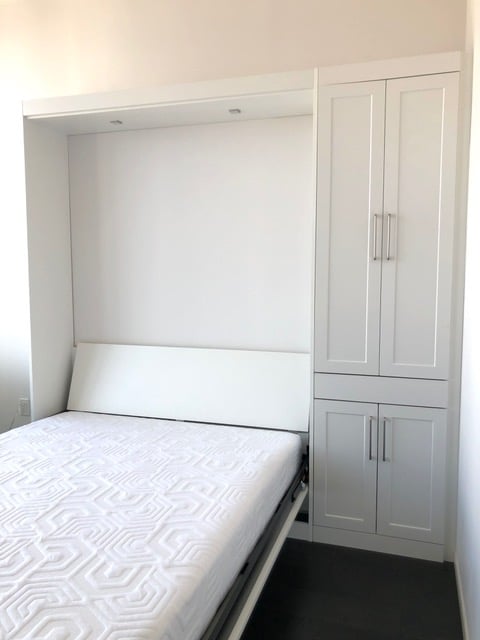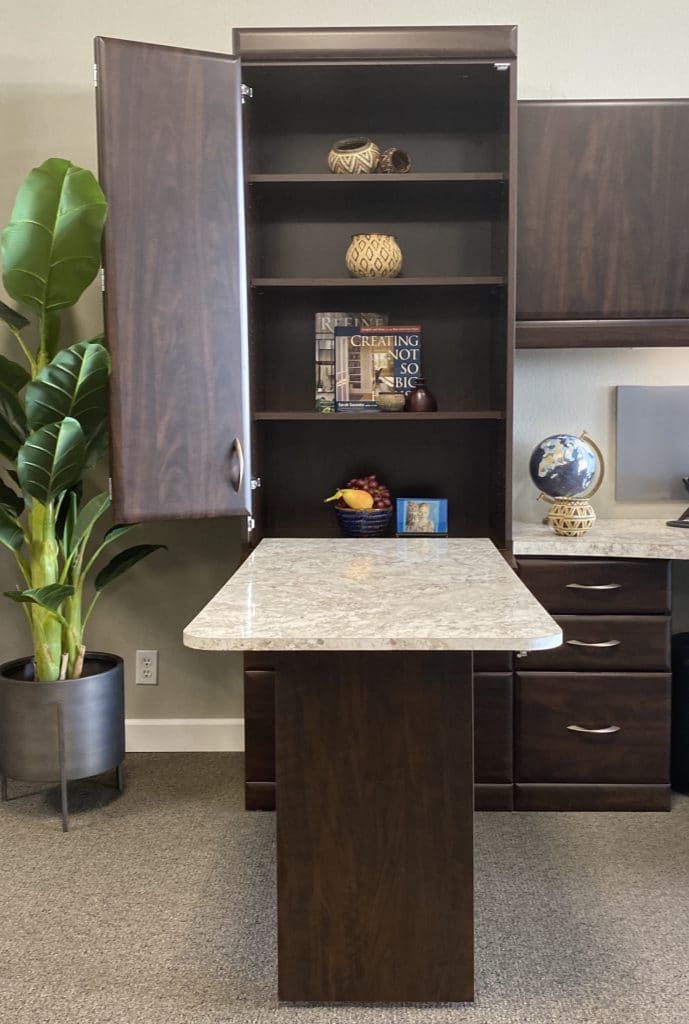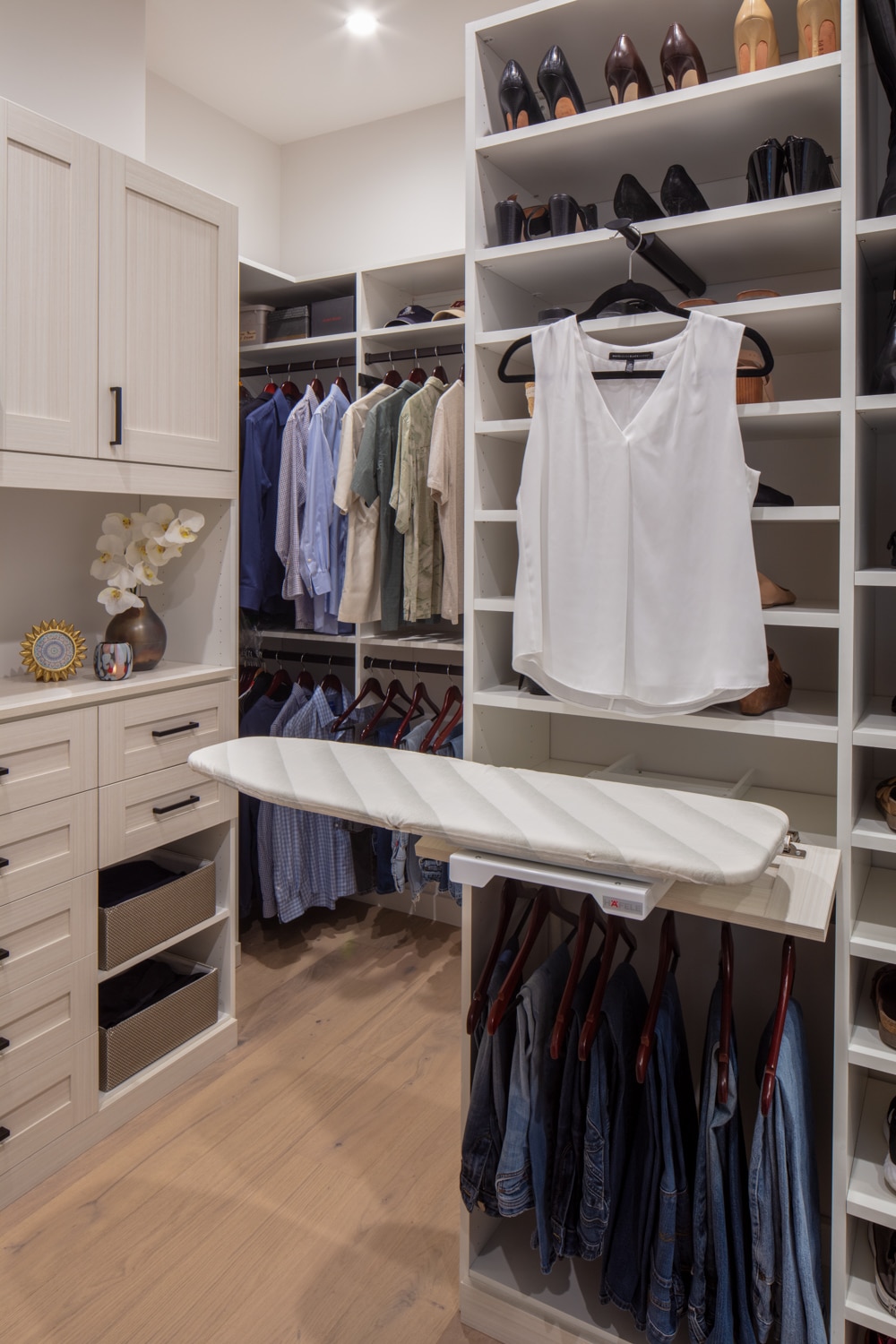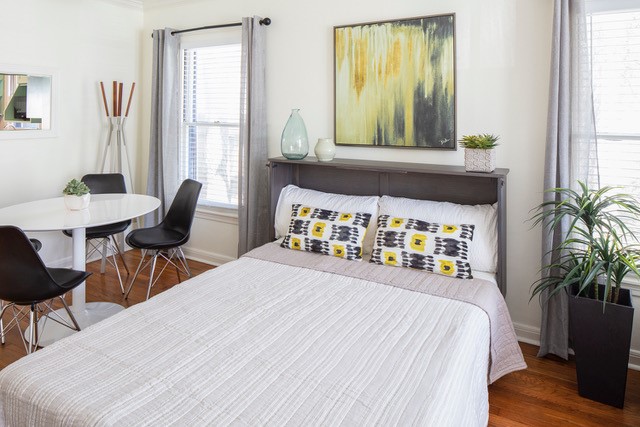
It’s no secret that the real estate market is hot in Texas. The median home price is currently at $480,000, a 59 percent increase in the past five years. Over the next 12 months? It’s expected to go up by another 37 percent.
With prices like these dominating the market, a move might not be something you’re planning for soon. At the same time, though, remote work is becoming increasingly common and people are spending more time in their homes, which can make everything feel a bit crowded.
Is there a solution and can you be happy in a home with less space? We’d like to think “less is more” or at least it can be if you’re maximizing the utility and functionality of the spaces in your home.
We’ve put together a few ideas on how to make more space in your home, so you can fully enjoy it (and so you’re not tripping over your partner’s computer cords and your kids’ shoes every time you turn around!).
1. Make space for a workspace.
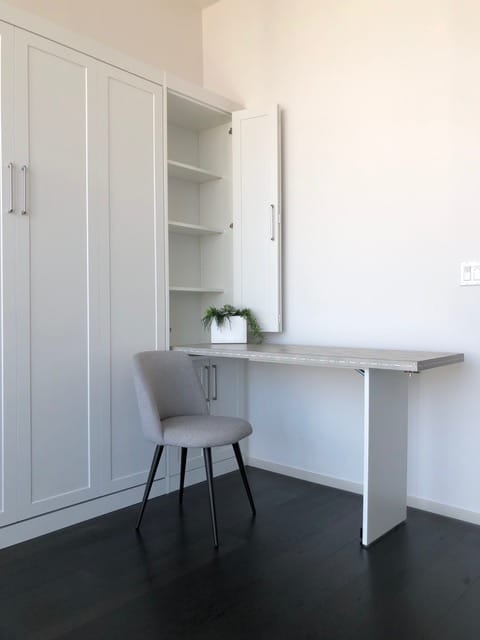
It may feel counterintuitive to set aside a dedicated home office workspace when you’re already feeling cramped. However, if you create an area that’s designed with productivity in mind, you’ll be able to keep your supplies and tech gadgets all in one place, saving time and energy throughout the day.
Many people working at home find that they have a printer in one room, a dedicated place for Zoom calls in another, and that they’re constantly picking up and relocating to accommodate the needs of other family members.
In a dedicated work area, you can neatly store your files, technology, cords and more. Whether you have an ample amount of space available or are working in a corner of your bedroom, a dedicated workspace can make a big difference in how comfortable your home feels.
Options for Incorporating a Home Office Space
- Working with a large space: If you have a spare room – bedroom, study, sunroom, etc. – consider custom cabinetry or shelving. These options provide great spaces to store books, files and more, keeping your space tidy and organized. Add a workspace desk and lighting, and you’ll be ready to get busy in your home office.
- Working with a small space: A drop-down desk can give you flexibility when you don’t have an extra room to spare. Consider adding a drop-down desk to a corner nook in a bedroom, in a corner of an open plan kitchen/dining area, even in a large closet. These desk units look like elegant cabinetry, then expand to provide a functional workspace when you need it.
- Working with a multi-purpose space. If you plan to balance your time equally between using a space for work and for leisure, a studio table bed combines the best of both worlds when it comes to space-saving. Also sometimes referred to as a leveling desk, this attachment gives you the freedom to fold away the bed, the desk, or both while still maintaining a manageable workspace.
2. Add a Murphy bed.
Murphy beds are stored vertically, creating additional floor space when they’re not in use.
One of the best space-saving combinations? Converting your guest bedroom to a home office, then replacing the traditional bed with a Murphy bed.
On a typical workday, you’ll have a wide-open space for managing household accounts or work business. Then, when you need it, you can easily open the Murphy bed to accommodate guests (or even to grab a little power nap in the middle of a long workday!).
And, as an added bonus, some Murphy beds and panel beds include shelving as part of their unit, so you’re increasing your storage space at the same time that you’re adjusting and figuring out how to make more space in your home.
3. Look for ways to use shelving creatively.
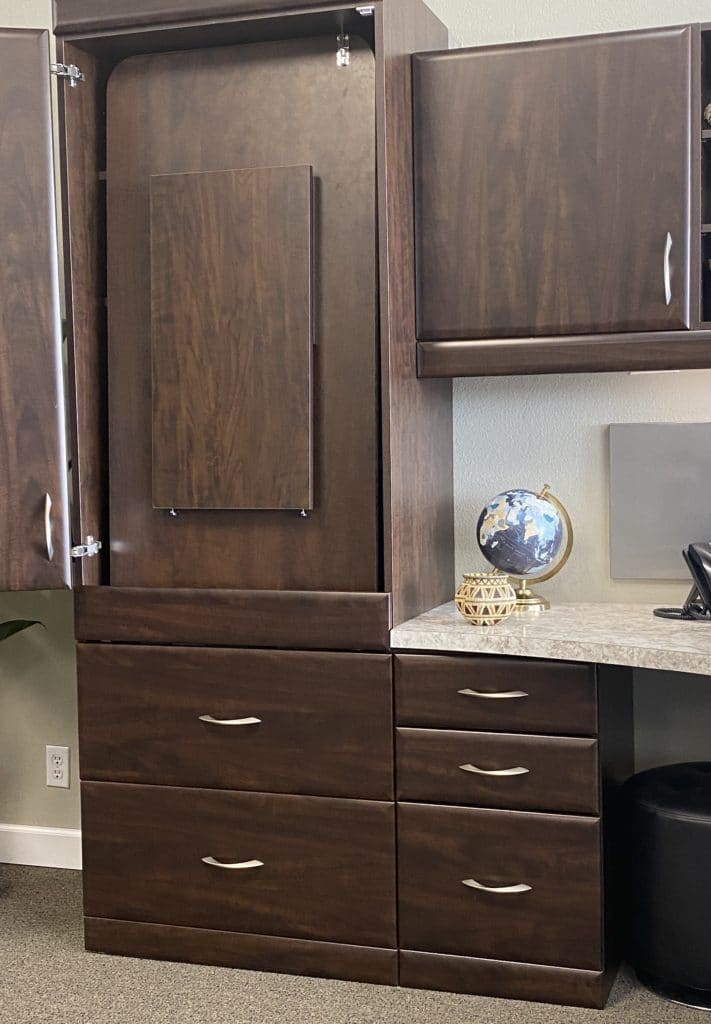 Speaking of shelving, add shelves and cabinetry can maximize your space in almost every room of your home. Some examples of storage solutions for small spaces include:
Speaking of shelving, add shelves and cabinetry can maximize your space in almost every room of your home. Some examples of storage solutions for small spaces include:
- Updating your pantry design to maximize shelf space and storage capacity
- Adding tall storage cabinets or over-appliance shelving to your laundry workspace
- Including adjustable shelving in your closets so you can make the most of your space
- Add built-in shelving units to a home office to keep clutter at a minimum and productivity at the highest level
4. Accessorize to maximize the functionality of your closets.
In addition to adding shelving in your closet, thoughtfully upgrading your closet accessories can free up space and boost functionality at the same time.
A good custom closet design might include features that allow you to adjust and make more space in your home as your needs change. For example, adjustable shelves and rods can make it easy to double or triple your hanging space and keep your closet neater.
Sliding and pullout closet accessories can also boost your ability to organize within your closet space – creating storage solutions for small spaces without taking up much extra space. These racks can be used to keep belts, ties, scarves and more in good order and easily accessible, instead of either taking up rack space or being out-of-sight, out-of-mind in a storage bin.
Make Your Home Usable for You, and Sellable in the Future
These ideas are intended to help you make more space in your home by making the best possible use of the space you have. When your spaces are well-designed, you’ll feel more comfortable in your home and more productive when you’re working in your home office, managing your laundry, getting ready for the day, and more.
And, as another perk in Austin’s competitive real estate market, thoughtful customizations can generate a strong return on investment when you decide you’re ready to sell. That means if you figure out how to make more space in your home, you’ll get the benefit of using the space and may also see the ROI reflected in your pricing when you’re ready to sell in the future.
Where would you most like to start making the most of your place, even if you’re living in a home with less space? Download one of our space planning guides to brainstorm options, then reach out to our designers with questions and ideas.


